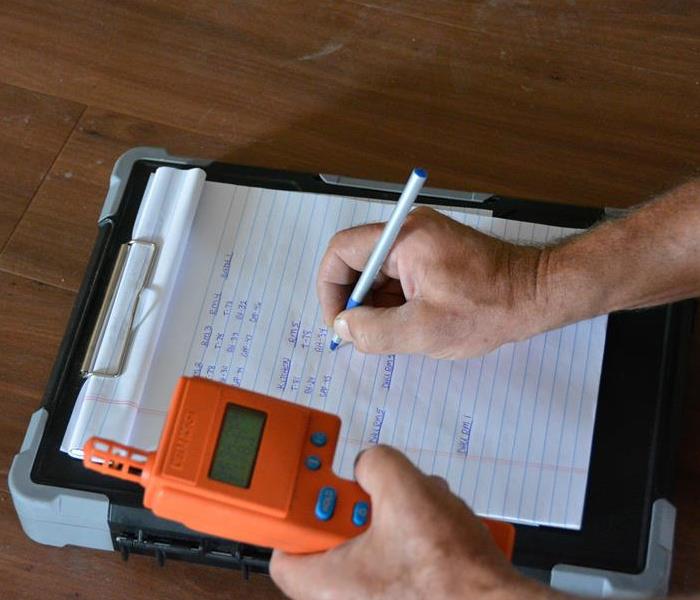Water Damage: The Science of Drying - Part II
12/24/2015 (Permalink)
 A Hygrometer reads humidity levels providing important information when answering "Is It Drying," and "Is It Dry."
A Hygrometer reads humidity levels providing important information when answering "Is It Drying," and "Is It Dry."
When the expert water technicians from SERVPRO® of Monroe/West Monroe begin drying your home after a water disaster, we have already answered two very important questions: “What is Wet” and “How Wet Is It.” We have discussed these questions in an earlier post. The answers to those questions allow us to develop a specific plan of action to begin the drying process. That plan tells us how much temporary drying equipment is needed in the affected areas and where that equipment needs to be installed.
Once drying equipment is installed and operating, the next phase of drying your home begins. Like the initial assessment, there are two questions that must be properly answered before our job is complete. Those questions are, “Is It Drying?” and “Is It Dry?”
Under ideal circumstances, drying your home can take several days. The different materials impacted by water damage in your home have unique drying characteristics. The metering equipment that tells us what is wet also tells us how much these materials have dried. Proper drying techniques include temperature management, air movement and dehumidification. Temperature (heat) brings moisture to the surface. Air movement removes (evaporates) moisture from the surface. Dehumidification removes the evaporated moisture from the air while supplying a sufficient amount of dry heated air to keep the cycle going. This on-going process lets us answer the question, “Is It Drying.”
The final question, “Is It Dry,” is answered when moisture and other measurements taken from the areas initially impacted by the water damage closely match the readings from areas that remained dry. In our initial assessment, and throughout the drying process, we take moisture measurements from an area within your home that was unaffected by the water leak and use those measurements as our “drying standard.” In its simplest terms, when our wet-area measurements closely match the dry-area measurements, we can conclude your home is dry.
At SERVPRO® of Monroe/West Monroe, we provide emergency water disaster services. These are the questions we know how to answer to get your home dry and keep your environment safe. We are available 24 hours a day, seven days a week by calling (318) 345-5121. We know how to properly assess water damages and develop and execute a plan of action in our efforts to make your loss “Like It Never Even Happened.”






 24/7 Emergency Service
24/7 Emergency Service